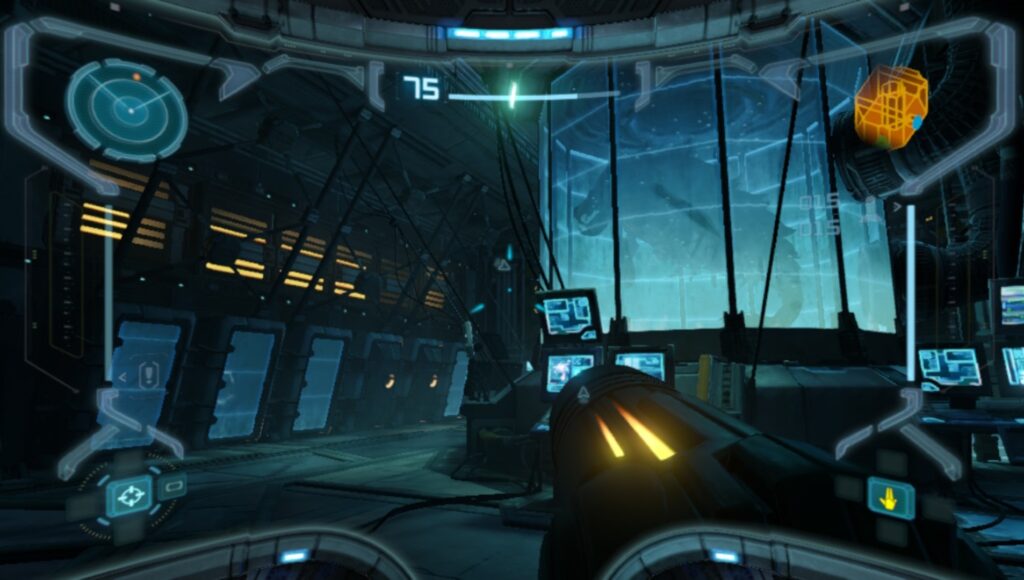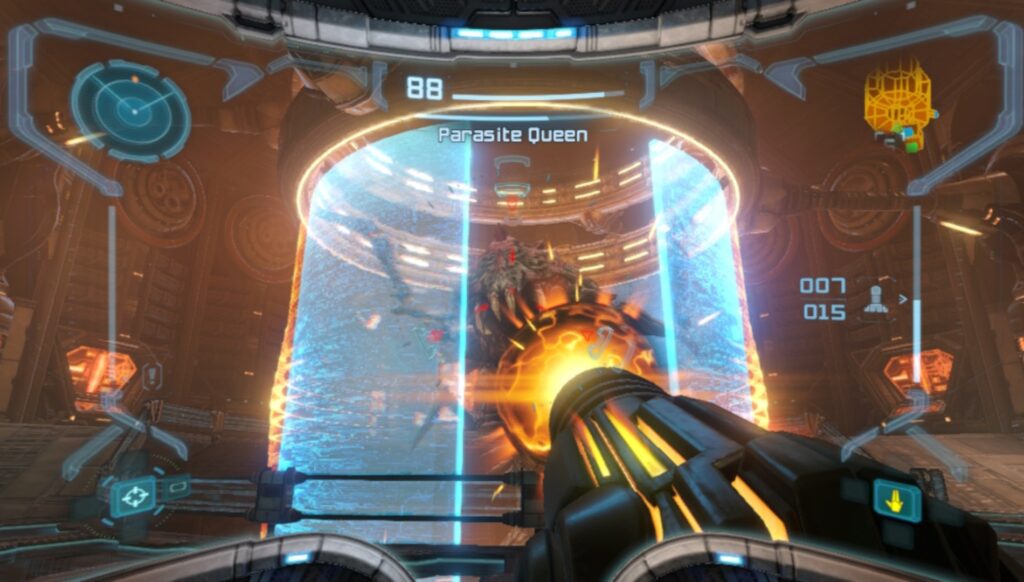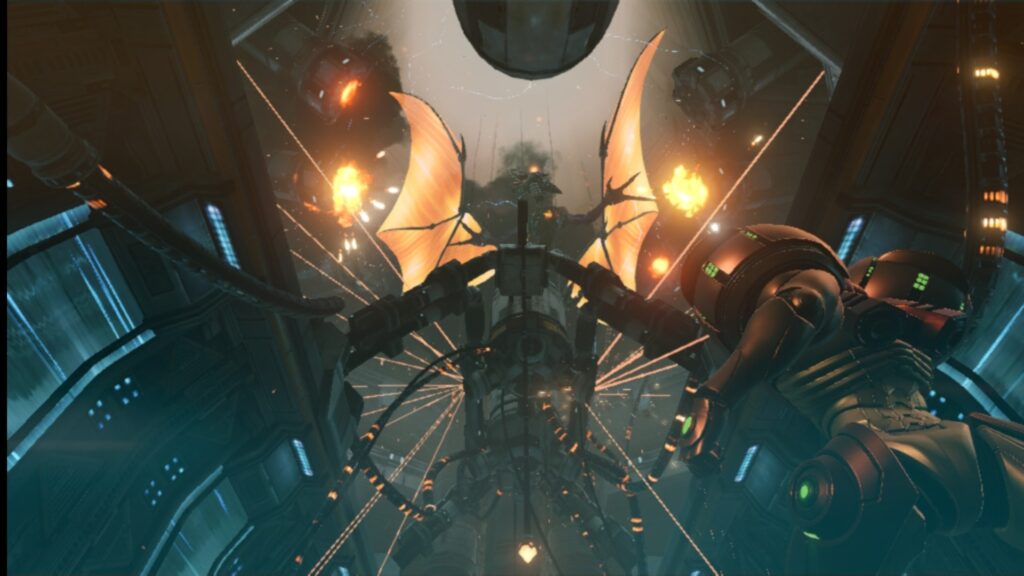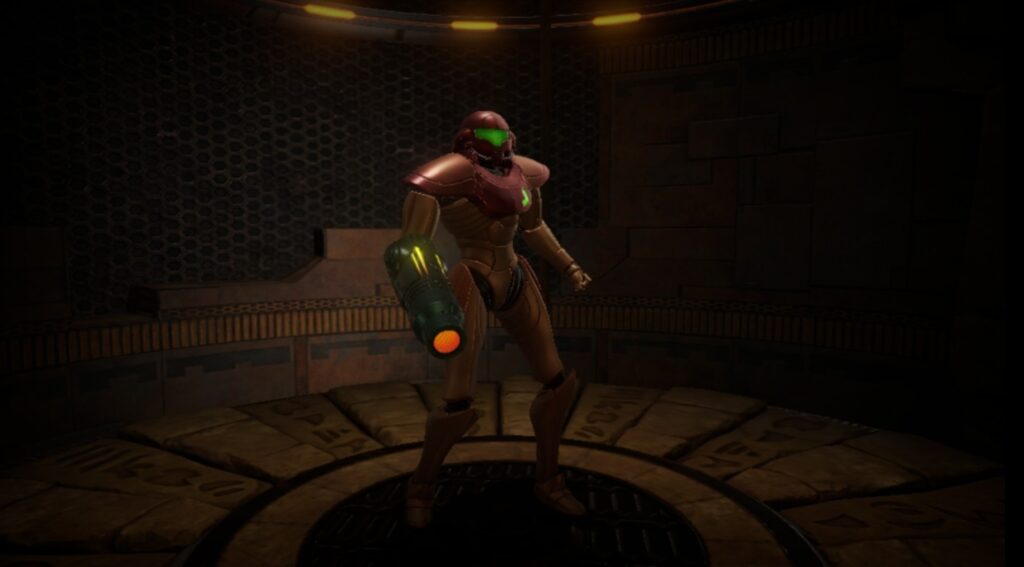
May 22, 2023
By Jude McElroy
Editor
In 2002, the Metroid series was in a weird spot. All of Nintendo’s major game series had made the jump to 3D with the Nintendo 64, but Metroid did not. Metroid had zero releases on the N64, and the series’ last game was Super Metroid in 1994. This is when Nintendo appointed Retro Studios to create the first 3D Metroid Game to release alongside Metroid Fusion on GBA, the next 2D Metroid.
Metroid Prime was released on GameCube on Nov. 18, 2002. It was highly praised on release and in the coming years. This warranted two sequels: Metroid Prime 2 Echoes, released about two years after the first game on GameCube, and Metroid Prime 3 Corruption, which was released about three years after Prime 2 on Wii. All three games were put into a collection on the Wii called Metroid Prime Trilogy in 2009, making this the definitive way to play the Prime trilogy of games for years until Metroid Prime: Remastered was released on Feb. 8, 2023. During a Nintendo Direct on that same day, Nintendo dropped a trailer and released the game digitally, with a physical release being made available two weeks later on Feb. 22. This was a game that fans had been asking for for years, and they finally got it. I rarely buy digital games, but this was an exception that I do not regret.
Metroid games have a special aura. No matter how old they are, they age perfectly, with the exception of the first two games on NES and GameBoy, respectively. Both of those games have remakes, and, fortunately, a lot of the issues of those have been fixed for modern standards, which is the case with Metroid Prime. Despite being 20 years old, and Metroid Prime: Remastered changing very little, I could barely tell that this was a game originating from the early years of modern FPSs.
Metroid Prime follows Samus looking for Ridley on the planet Tallon-IV. After infiltrating the Space Pirate Frigate Orpheon that was located right outside the atmosphere of Tallon-IV, Samus learns about the Pirate’s research into a mysterious substance known as Phazon. Phazon is highly radioactive but spurs mutations in those infected, and the Pirates were looking to harness that power to put them one step closer to galactic domination. They set up multiple bases on Tallon-IV and even a massive mining operation to cultivate as much Phazon as possible. Samus infiltrates all of these bases and by the end of the game destroys the source of the Phazon corruption.
The areas in Metroid Prime are all very distinct and have new enemies and secrets to discover. The game is split into five areas: Tallon Overworld, Chozo Ruins, Magmoor Caverns, Phendrana Drifts and Phazon Mines.

The Tallon Overworld is where Samus touches down on Tallon-IV and connects to all of the other areas one way or another. It’s always raining and covered in lush greenery.
The Chozo Ruins is the second area in the game, where a lot of the essential upgrades are located. Because Samus lost her abilities while escaping the Orpheon, she has to regain them. The Ruins were the home of the ancient Chozo, which have now been wiped out by Phazon. They left behind the abilities of the “Chosen One” who would eradicate the Phazon. This “Chosen One” is Samus, and it explains why a lot of Samus’s upgrades are located in Chozo structures all throughout Tallon-IV.
The Magmoor Caverns is the smallest area in the game and acts more like a hallway between the other areas. It only has one major upgrade that isn’t obtained until very late into the game. The Caverns are filled with lava and house a small Pirate base that acts as a power plant.
Phendrana Drifts is covered in snow and has a couple of important upgrades. This is my favorite area of the game. Between the music and the way the Drifts look, it stands out way more than the other areas to me. It also contains a Space Pirate research base where they were working on the Metroids. This was the only reasonable place the Metroids could be contained because of their weakness to frigid temperatures. Metroids are found in other areas of the game, but in the story, it makes the most sense that the Pirates would research the Metroids the most in Phendrana Drifts.
The last area is the Phazon Mines. The Mines are riddled with Space Pirates. While the other areas in the game have Pirate bases, this whole area is inhabited by Pirates. It is by far the toughest area in the game, with almost every room containing a handful of Pirates Samus has to dispose of. Samus even has to face the Elite Pirates, the products of the Pirates’ rigorous testing of Phazon and its effects.

This world is brought alive even more in Metroid Prime: Remastered, which includes some new control scheme options, a way to see concept art and models and listen to every music track. The gameplay is the same, but the visuals have improved greatly.
The graphics for Metroid Prime: Remastered are nothing short of remarkable. For the Nintendo Switch, this game is extremely impressive. I experienced a grand total of zero performance issues. All of the visuals were completely redone to fit the Switch, and Retro went all out. There are times when it’s hard to believe the game is running on the Switch, a notoriously weak system.
Samus can see this world in different ways using the visors she can obtain. The main one players will be using constantly is the Scan Visor. Unlocked from the beginning, the Scan Visor is used to gain information on enemies and the world of Tallon-IV. It’s great for worldbuilding and brings Tallon-IV to life. The player can even obtain little entries for every enemy in the game and some text logs from the Chozo and Pirates, giving more insight into their motives and civilization.

The other two visors are the Thermal and X-Ray visors. Both are used very minimally and are only required for a couple of sections in the game, which is good because the Thermal Visor kind of hurts my eyes. The way everything moves with the Thermal Visor on does not agree with my head, and I end up wanting to swap off of the visor as soon as possible.
The combat in Metroid Prime is interesting too. Unlike other First-Person-Shooters, there’s no need to be good at aiming. Samus has the ability to lock on to enemies, allowing the player to focus way more on movement and switching beams. Speaking of which, Samus has access to four different beam types. Each beam has three moves total: the main attack, Charge Beam and Charge Combo attacks. Once unlocked, the Charge Beam works on any gun, whereas every beam other than the Power Beam has an optional Super Missile upgrade.
The first beam, which is unlocked right from the beginning, is the Power Beam. It shoots small, low-damage projectiles with a fast fire rate. It can dish out quite a bit of damage if the player fires fast enough. The Power Beam does not have a Charge Combo. Instead, it has the Super Missile, a much more powerful version of Samus’s missile.

The second beam Samus obtains is the Wave Beam. It has three projectiles that wave in a pattern. Its Charge Beam attack stuns enemies for a short time, giving Samus an opening to move around and dish out some damage. Its Charge Combo attack, the Wavebuster, shoots an extremely powerful electrical beam at enemies. The player can hold the attack for as long as they have missiles.
The next is the Ice Beam. As the name suggests, it freezes enemies in place. It shoots extremely slowly though, making it the weakest beam on its own. It shines, though, when combined with other abilities. Most enemies die to a single missile when frozen. Unlike the Wave Beam, which has to charge up to stun enemies, the Ice Beam has that ability once Samus switches to it. It’s also the single best way to fight the Metroids, which easily go down an Ice Beam shot and a missile. Its Charge Combo is the Ice Spreader, which gives the Ice Beam the ability to freeze multiple enemies for some missiles.
The last is the Plasma Beam. In terms of raw power, this is the best beam. It has great damage and fire rate, its projectiles rarely miss and it has a damage-over-time effect too. Its Charge Combo is the Flamethrower, which shoots a powerful stream of fire at the cost of missiles.
While it may seem easy to just stomp all of the enemies in the game once Samus obtains the Plasma Beam, this is not the case. Some enemies, especially later in the game, can only be damaged by one Beam type, making it so that the player has to quickly swap Beams in the heat of combat. This adds a lot of depth and makes some late-game fights a little more challenging. Samus moves quickly and has a small dodge to help her move around enemy attacks when locked on. Combat is pretty fun.
The graphics for Metroid Prime: Remastered are nothing short of remarkable. For the Nintendo Switch, this game is extremely impressive.
If only those positives applied to the bosses. They’re fine for the first minute or two of the fight, but when it goes on longer than five minutes because of how much health a boss has, I start to lose interest. Enemies and bosses take way too long to take down, and I feel like it really messes with the flow of combat. An otherwise fun and engaging combat system is spoiled by enemies and bosses that just won’t die.
Going for 100% completion has been a pretty important and fun part of Metroid games. This is not the case with Prime. All enemies and Pirate/Chozo logs have to be scanned to 100% of the game. There are some enemies and bosses that have to be scanned to get their entries. In fact, it was impossible for me to get 100% in my first playthrough because of the enemy scans I had missed. Not only that but the map is unhelpful when it comes to collecting missed upgrades like Missile Tanks, Energy Tanks and the optional Charge Combo upgrades. I know it’s a first-world problem, but I really wish the completion process were a little more streamlined.
That is the major issue I have with Metroid Prime: Remastered. While not every remaster of a game has to tweak things about the source material, this one could have heavily benefitted from some updates. A way to track what items the player has and has not obtained, similar to the way the recent Metroid Dread handled item tracking, would have done wonders for the completion process. The same goes for the bosses. They could have easily made it easier to take the bosses down and streamline the experience, but they chose not to. I recognize this is a personal preference, but I can’t help to think that Retro had the opportunity to make an already astounding game even better by making some small changes.

Another huge issue Metroid Prime: Remastered has is backtracking. Having to go back through areas you’ve already explored multiple times is not super enjoyable, but it didn’t really bother me in the main game. However, once the player obtains every major upgrade, they are tasked with locating the Chozo Artifacts. While the player can look for them as early as obtaining the Missile upgrade, some are impossible to get until the last couple of upgrades in the game. There are 12 artifacts in total, with many of them being extremely easy to miss. The game gives hints, which help a lot, but having to comb through every area again is by a long shot my least favorite aspect of this game. It kills the game’s pace and forces the player to go back and revisit areas they’ve seen so many times already.
With all that negativity aside, I do believe Metroid Prime: Remastered is a wonderful game. It has so many great aspects made even better. The art direction and world design are on another level with this game. But in terms of it being a remaster, I can’t help but wish Retro took it a step further. While I love and appreciate it for what it is, there’s a part of me that wishes more changes were made to make Metroid Prime: Remastered even better.
Overall, I give this game 8/10. It has so many good aspects, but other bits kind of get on my nerves. I still enjoyed my time with this game, and putting its extremely minor problems aside, I’d easily recommend this stunning remaster.


